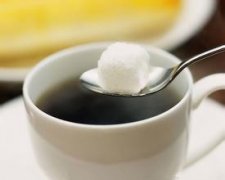What's salt coffee? A cup of coffee with a teaspoon of natural salt.

One cup of coffee plus 1 tablespoon of natural salt, plus lactic acid bacteria and other ingredients that can adjust the intestinal environment. It can eliminate constipation, improve the intestinal environment, increase the number of enzymes, and improve the efficiency of enzymes. Caffeine, the main ingredient of coffee, has the effect of awakening and diuresis; it can dilate the bile duct and accelerate the excretion of toxins and wastes in the blood; it can also increase the secretion of gastric juice, improve the efficiency of decomposing fat in the body, and increase the amount of high-density lipoprotein. Therefore, it can enhance metabolism and lose weight. Coffee also contains chlorogenic acid, which has the effect of antioxidation and moisturizes dry, rough skin. Potassium, calcium, magnesium and other minerals in natural salt are as balanced as sea water, which helps to maintain the balance of minerals in the intestine and improve the environment of enzyme activity.
Japanese gastrointestinal endoscope expert Hiroshi Niigani recommends that intestinal bacteria produce more than 3000 enzymes, and if spoilage bacteria increase, it will destroy the balance of intestinal bacteria. To maintain a good intestinal environment, it is necessary to keep the stool unobstructed, because the stool stays in the large intestine for too long, spoilage bacteria will produce a large number of ammonia, hydrogen sulfide and other toxic substances. There are more than 500 kinds of enzymes working in the liver, sharing the task of storage, decomposition of nutrition and detoxification. Once the intestinal environment deteriorates and toxins pollute the blood, it will increase the burden of liver detoxification.
Important Notice :
前街咖啡 FrontStreet Coffee has moved to new addredd:
FrontStreet Coffee Address: 315,Donghua East Road,GuangZhou
Tel:020 38364473
- Prev

The beauty magic of coffee beauty is endless
A seemingly unamazing coffee beans, as long as baked, milled, boiled bubble, can be transformed into a spell of the spirit, into our bodies, sunscreen, anti-fat, anti-aging, decompression with endless beautiful magic! The Beautiful Legend of Coffee Coffee comes from the Greek word Kaweh, meaning strength and passion. Legend has it that a shepherd found him when he was herding sheep.
- Next

Don't do three things after drinking, one of which is don't drink coffee.
Don't drink a lot of coffee. Caffeine is a diuretic, and drinking a lot of coffee after drinking alcohol can aggravate the body's lack of water and make you feel worse. Suggestion: drink more black tea and drink more water the next day to achieve a refreshing effect. 2. Don't take antipyretic medicine. Taking antipyretic drugs (hydroxyphenylacetamide) after drunkenness can produce toxic substances, causing inflammation of the liver and even permanent damage. Suggestion: mention it the next morning
Related
- Beginners will see the "Coffee pull flower" guide!
- What is the difference between ice blog purified milk and ordinary milk coffee?
- Why is the Philippines the largest producer of crops in Liberia?
- For coffee extraction, should the fine powder be retained?
- How does extracted espresso fill pressed powder? How much strength does it take to press the powder?
- How to make jasmine cold extract coffee? Is the jasmine + latte good?
- Will this little toy really make the coffee taste better? How does Lily Drip affect coffee extraction?
- Will the action of slapping the filter cup also affect coffee extraction?
- What's the difference between powder-to-water ratio and powder-to-liquid ratio?
- What is the Ethiopian local species? What does it have to do with Heirloom native species?

